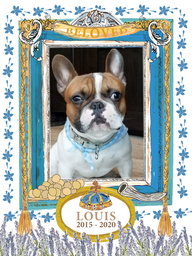|
Louis XV style differs essentially from Baroque in its lightness and avoidance of symmetry. Featuring a more moderate use of curved lines and less fanciful ornament than Baroque, Louis XV style is the epitome of French furniture at its finest. This period is regarded by many as the Golden Age of French furniture. Comfort was all the rage in the 18th century. The asymmetrical, more ornate and more playful Rococo style was born. Writing desks with flaps, roll-top desks, wooden paneling, and ladies’ furniture like vanities and dressing tables appeared.
The Louis XV chair became smaller and more feminine. Springs were added, satisfying the salon society’s craving for comfort. Shells, baskets/sprays of flowers, ribbons, symbols of love (bows, arrows and torches) and pastoral and romantic emblems (crooks and straw shepherdess hats) became popular motifs, many of these carved into crest rails, aprons and the knees of chair legs. |
The easiest way to spot a Louis XV chair is by the signature “S” shaped cabriole leg. Similar in scale to the Louis XVI chair, there’s no mistaking the legs on Louis XV chairs, shaped like an animal's hind legs. Stretcher supports disappeared from French chairs after the invention of curved cabriole legs.
Most Rococo chairs were designed to sit against a wall. The pastel, intricately embroidered silk of the seats and backs, was an integral part of the design of a room, meant to complement the patterns and colors of the adjacent wall paneling. To accommodate the opulent fashions of the day, chair arms were shortened to account for hoop skirts, while chair backs were lowered to spare huge coiffures. When upholstery became more readily available under Louis XV’s extravagant Rococo reign, armchairs called bèrgeres included fabric-covered panels between the arms and seats. Members of the Parisian guilds were required to stamp or sign their names on pieces of furniture made between 1743 and 1790. |
|
|
|































